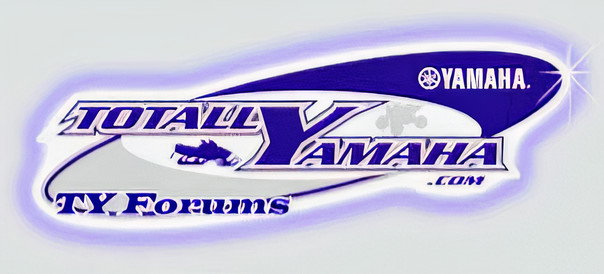BoB101[H]
New member
- Joined
- Feb 6, 2006
- Messages
- 7
Maxwell- I have always had good luck with Art's, so I might just call the boys and have them find something that would work. I do have a 91 Phazer that I would like to do the same thing to, but right now that thing stops on a dime with the intended driver (my wife- not too hard to stop the lightweights, just us heavies ) so it is not a high priority.
) so it is not a high priority.
I thought that the early Vmax's were still cable brakes? Just waiting for shipping from ebay now, should have some stuff to fab soon...
 ) so it is not a high priority.
) so it is not a high priority. I thought that the early Vmax's were still cable brakes? Just waiting for shipping from ebay now, should have some stuff to fab soon...
crimsonride
New member
- Joined
- Sep 29, 2005
- Messages
- 183
PZ 1 said:The holes should cover the entire swept surface and should overlap each other.
The holes should be sharp edged and not chamfered at all.
Just curious, why sharp edged? My crossdrilled, sloted rotors on my jeep are chamfered.
PZ 1
Member
- Joined
- Mar 12, 2005
- Messages
- 987
I am not a brake expert, but from what I have learned, the purpose of the holes is to scrape brake dust or any other debris from the pads. That is the reason for the sharp edge and why the holes should overlap. The pad material is hard and smooth and is not ground off by the holes, although the wear rate may be slightly accelerated.
Another benefit of the holes is the cooling of the disc. The holes will also cause some "pumping" of air, so that may offset a weight loss advantage.
I do not know why the holes in your discs are chamfered, perhaps to cool without any higher rate of pad wear. It would be interesting to hear from someone with more knowledge on the subject. I know the ones on my Kawasaki motorcycle and the disc I had drilled for my Phazer are sharp.
Another benefit of the holes is the cooling of the disc. The holes will also cause some "pumping" of air, so that may offset a weight loss advantage.
I do not know why the holes in your discs are chamfered, perhaps to cool without any higher rate of pad wear. It would be interesting to hear from someone with more knowledge on the subject. I know the ones on my Kawasaki motorcycle and the disc I had drilled for my Phazer are sharp.
nightmanx1
New member
I had an old 338 and it had a solid brake disc and had a problem with heating up and glazing the pads and I would have NO brakes. We had is drilled and the problem went away.
crimsonride
New member
- Joined
- Sep 29, 2005
- Messages
- 183
hmmm....now that you mention it my mountain bike and dirt bike brakes aren't chamfered but sure enough (I checked), my jeeps' are chamfered.
